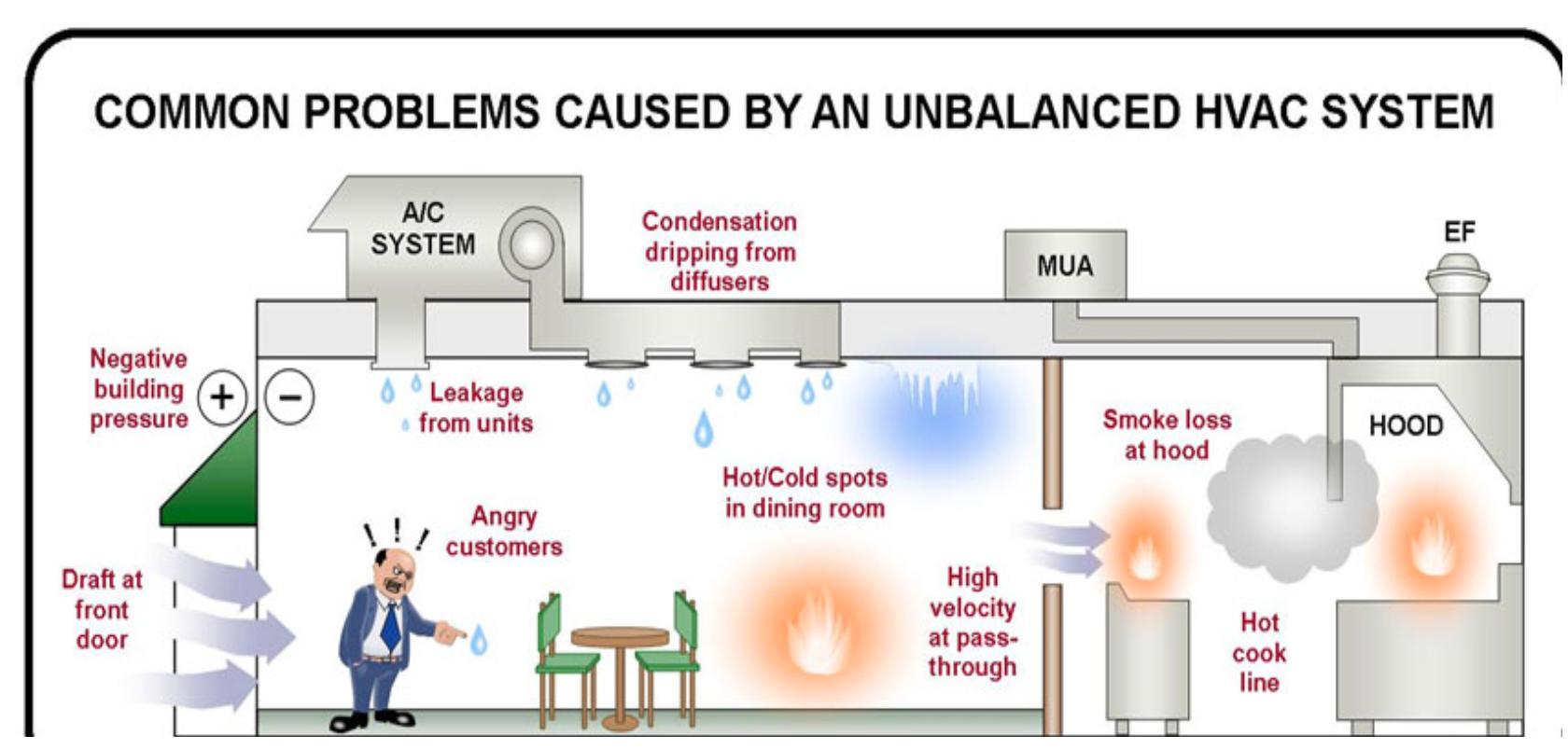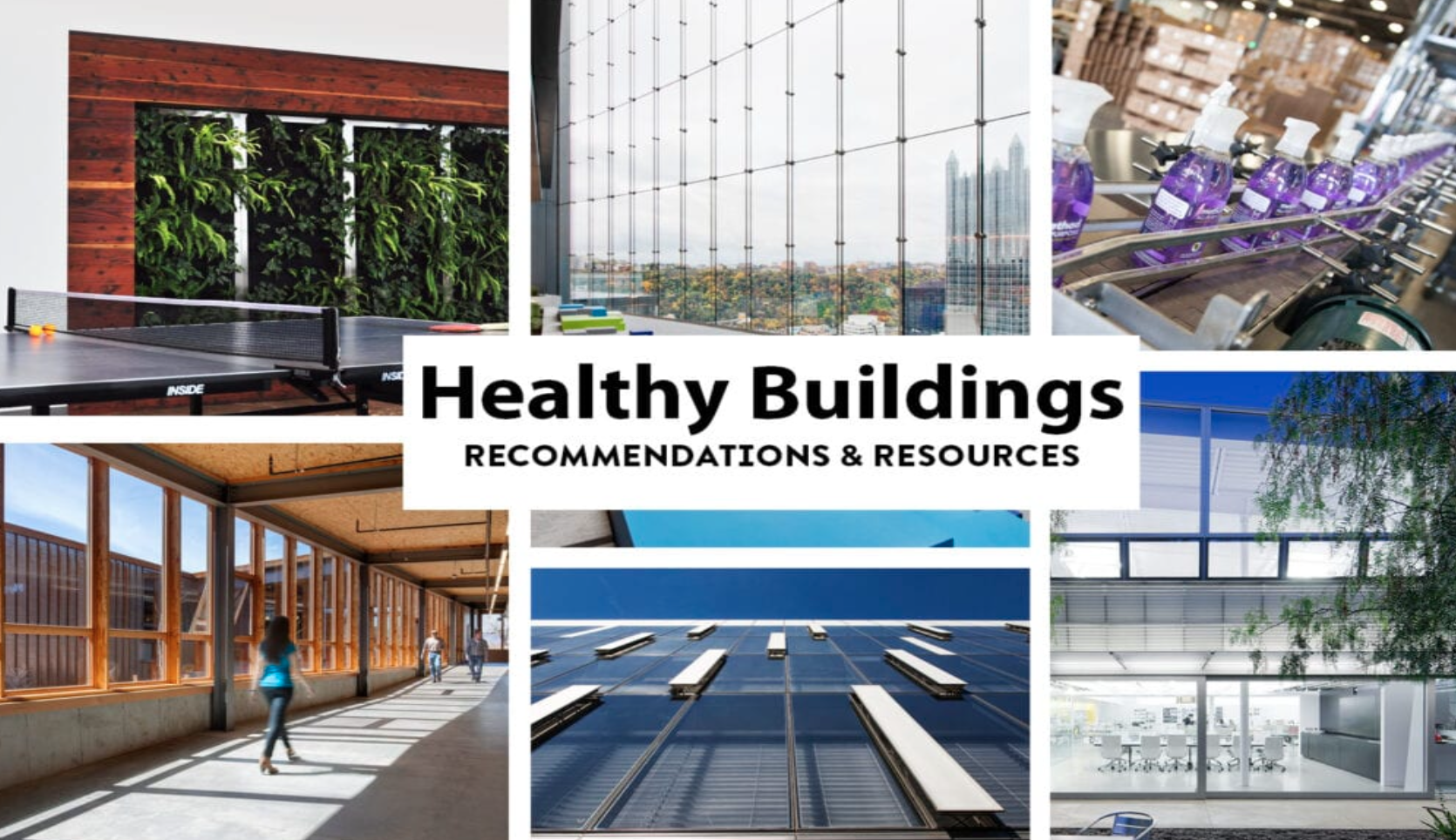 Some years ago, I was contracted to perform an audit of three government of Canada building, just over the bridge from Ottawa in Quebec. After meeting with the Occupational Health & Safety committee members, I decided to follow up on some of the concerns, it was not rocket science, in the basement, which was the carpark, plaster was flaking off the walls with water accumulating in puddles.
Some years ago, I was contracted to perform an audit of three government of Canada building, just over the bridge from Ottawa in Quebec. After meeting with the Occupational Health & Safety committee members, I decided to follow up on some of the concerns, it was not rocket science, in the basement, which was the carpark, plaster was flaking off the walls with water accumulating in puddles.
The term “sick building syndrome” (SBS) is used to describe situations in which building occupants experience acute health and comfort effects that appear to be linked to time spent in a building, but no specific illness or cause can be identified. The complaints may be localized in a particular room or zone or may be widespread throughout the building. In contrast, the term “building related illness” (BRI) is used when symptoms of diagnosable illness are identified and can be attributed directly to airborne building contaminants.
When I visited the medical center, I found an unusually high number of women on sick leave, further investigation found me looking above the false ceiling, once again I found damp walls with mould, in the offices below, I found the staff had re-positioned the vents away from their workspace, I had an occupational Hygienist take samples of the air, close to where the employees sat, in my report I coined the phrase “Sick Building Syndrome”
During my research I found a World Health Organization Committee report suggested that up to 30 percent of new and remodeled buildings worldwide may be the subject of excessive complaints related to indoor air quality (IAQ). Often this condition is temporary, but some buildings have long-term problems. Frequently, problems result when a building is operated or maintained in a manner that is inconsistent with its original design or prescribed operating procedures.
Sometimes indoor air problems are a result of poor building design or occupant activities. Indicators of SBS include Building occupants complain of symptoms associated with acute discomfort, e.g., headache; eye, nose, or throat irritation; dry cough; dry or itchy skin; dizziness and nausea; difficulty in concentrating; fatigue; and sensitivity to odors.
The cause of the symptoms is not known. Most of the complainant’s report relief soon after leaving the building. Indicators of BRI include:
Building occupants complain of symptoms such as cough; chest tightness; fever, chills; and muscle aches. The symptoms can be clinically defined and have clearly identifiable causes. Complainants may require prolonged recovery times after leaving the building.
It is important to note that complaints may result from other causes. These may include an illness contracted outside the building, acute sensitivity (e.g., allergies), job related stress or dissatisfaction, and other psychosocial factors. Nevertheless, studies show that symptoms may be caused or exacerbated by indoor air quality problems.
Causes of Sick Building Syndrome The following have been cited causes of or contributing factors to sick building syndrome: Inadequate ventilation:
In the early and mid 1900’s, building ventilation standards called for approximately 15 cubic feet per minute (cfm) of outside air for each building occupant, primarily to dilute and remove body odors. As a result of the 1973 oil embargo, however, national energy conservation measures called for a reduction in the amount of outdoor air provided for ventilation to 5 cfm per occupant. In many cases these reduced outdoor air ventilation rates were found to be inadequate to maintain the health and comfort of building occupants. Inadequate ventilation, which may also occur if heating, ventilating, and air conditioning (HVAC) systems do not effectively distribute air to people in the building, is thought to be an important factor in SBS. Toachieve acceptable IAQ while minimizing energy.
Now in 2023 there is a new emerging movement called the healthy building movement which aims to improve the lives of all people, in all buildings, everywhere, every day. As a recent well-being movement, the healthy building movement is in no doubt in contrast to “sick building syndrome” theory or negative health symptoms associated with frequenting a building, good components of a healthy building include good indoor air quality, comfortable temperatures, low noise levels, and good natural lighting.
Furthermore, the health and performance of a building’s occupants are not exclusively dependent on their surroundings but also on the amenities and benefits given to the occupants. In the case of workers and employees, this includes benefits such as paid leave and mental health support and a sustainable working environment.
Work premises have an interest in creating a healthy environment to ensure maximum productivity of their employees as research has shown that cognitive performance is significantly linked to the health of the environment of a subject.
Pandemic preparedness has also become an important proponent of the healthy building movement with the latest research recently being unearthed on how organisations can best prepare for future outbreaks and adapt to a post pandemic world.
Learn the benefits of providing a healthy environment for your employees, customers, and visitor in the following study. We have taken 2 lessons from each of our five key subject categories (Working Environment, Air Quality, Hygiene, Outbreak response, and Staff Wellbeing) to give you a snapshot of the knowledge you will receive once registering for certification and the guidance that you will receive to help you get certified. consumption, the American Society of Heating, Refrigerating and Air-Conditioning Engineers (ASHRAE) recently revised its ventilation standard to provide a minimum of 15 cfm of outdoor air per person (20 cfm/person in office spaces). Up to 60 cfm/person may be required in some spaces (such as smoking lounges) depending on the activities that normally occur in that space (see ASHRAE Standard 62-1989). Chemical contaminants from indoor sources:
Most indoor air pollution comes from sources inside the building. For example, adhesives, carpeting, upholstery, manufactured wood products, copy machines, pesticides, and cleaning agents may emit volatile organic compounds (VOCs), including formaldehyde. Environmental tobacco smoke contributes high levels of VOCs, other toxic compounds, and respirable particulate matter. Research shows that some VOCs can cause chronic and acute health effects at high concentrations, and some are known carcinogens.
Low to moderate levels of multiple VOCs may also produce acute reactions. Combustion products such as carbon monoxide, nitrogen dioxide, as well as respirable particles, can come from unvented kerosene and gas space heaters, wood stoves, fireplaces, and gas stoves. Chemical contaminants from outdoor sources: The outdoor air that enters a building can be a source of indoor air pollution. For example, pollutants from motor vehicle exhausts; plumbing vents, and building exhausts (e.g., bathrooms and kitchens) can enter the building through poorly located air intake vents, windows, and other openings. In addition, combustion products can enter a building from a nearby garage. Biological contaminants: Bacteria, molds, pollen, and viruses are types of biological contaminants.
These contaminants may breed in stagnant water that has accumulated in ducts, humidifiers and drain pans, or where water has collected on ceiling tiles, carpeting, or insulation. Sometimes insects or bird droppings can be a source of biological contaminants. Physical symptoms related to biological contamination include cough, chest tightness, fever, chills, muscle aches, and allergic responses such as mucous membrane irritation and upper respiratory congestion. One indoor bacterium, Legionella, has caused both Legionnaire’s Disease and Pontiac Fever.
These elements may act in combination, and may supplement other complaints such as inadequate temperature, humidity, or lighting. Even after a building investigation, however, the specific causes of the complaints may remain unknown. A Word About Radon and Asbestos.
SBS and BRI are associated with acute or immediate health problems; radon and asbestos cause long-term diseases which occur years after exposure and are therefore not considered to be among the causes of sick buildings.
This is not to say that the latter are not serious health risks; both should be included in any comprehensive evaluation of a building’s IAQ. Building Investigation Procedures,
The goal of a building investigation is to identify and solve indoor air quality complaints in a way that prevents them from recurring and which avoids the creation of other problems. To achieve this goal, it is necessary for the investigator(s) to discover whether a complaint is related to indoor air quality, identify the cause of the complaint, and determine the most appropriate corrective actions. An indoor air quality investigation procedure is best characterized as a cycle of information gathering, hypothesis formation, and hypothesis testing. It generally begins with a walkthrough inspection of the problem area to provide information about the four basic factors that influence indoor air quality:
• the occupants
• the HVAC system
• possible pollutant pathways
• possible contaminant sources
Preparation for a walkthrough should include documenting easily obtainable information about the history of the building and of the complaints; identifying known HVAC zones and complaint areas; notifying occupants of the upcoming investigation; and identifying key individuals needed for information and access. The walkthrough itself entails visual inspection of critical building areas and consultation with occupants and staff. The initial walkthrough should allow the investigator to develop some possible explanations for the complaint.
At this point, the investigator may have sufficient information to formulate a hypothesis, test the hypothesis, and see if the problem is solved. If it is, steps should be taken to ensure that it does not recur. However, if insufficient information is obtained from the walk through to construct a hypothesis, or if initial tests fail to reveal the problem, the investigator should move on to collect additional information to allow formulation of additional hypotheses. The process of formulating hypotheses, testing them, and evaluating them continues until the problem is solved. Although air sampling for contaminants might seem to be the logical response to occupant complaints, it seldom provides information about possible causes.
While certain basic measurements, e.g., temperature, relative humidity, CO2, and air movement, can provide a useful “snapshot” of current building conditions, sampling for specific pollutant concentrations is often not required to solve the problem and can even be misleading. Contaminant concentration levels rarely exceed existing standards and guidelines even when occupants continue to report health complaints.
Air sampling should not be undertaken until considerable information on the factors listed above has been collected, and any sampling strategy should be based on a comprehensive understanding of how the building operates and the nature of the complaints. Solutions to solutions to sick building syndrome usually include combinations of the following: Pollutant source removal or modification is an effective approach to resolving an IAQ problem when sources are known and control is feasible.
Examples include routine maintenance of HVAC systems, e.g., periodic cleaning or replacement of filters; replacement of water-stained ceiling tile and carpeting; institution of smoking restrictions; venting contaminant source emissions to the outdoors; storage and use of paints, adhesives, solvents, and pesticides in well ventilated areas, and use of these pollutant sources during periods of non-occupancy; and allowing time for building materials in new or remodeled areas to off-gas pollutants before occupancy. Several of these options may be exercised at one time.
Increasing ventilation rates and air distribution often can be a cost-effective means of reducing indoor pollutant levels. HVAC systems should be designed, at a minimum, to meet ventilation standards in local building codes; however, many systems are not operated or maintained to ensure that these design ventilation rates are provided. In many buildings, IAQ can be improved by operating the HVAC system to at least its design standard, and to ASHRAE Standard 62-1989 if possible.
When there are strong pollutant sources, local exhaust ventilation may be appropriate to exhaust contaminated air directly from the building. Local exhaust ventilation is particularly recommended to remove pollutants that accumulate in specific areas such as rest rooms, copy rooms, and printing facilities. (For a more detailed discussion of ventilation, read Indoor Air Ventilation and Air Quality in Office Buildings.) Air cleaning can be a useful adjunct to source control and ventilation but has certain limitations. Particle control devices such as the typical furnace filter are inexpensive but do not effectively capture small particles; high performance air filters capture the smaller, respirable particles but are relatively expensive to install and operate. Mechanical filters do not remove gaseous pollutants. Some specific gaseous pollutants may be removed by adsorbent beds, but these devices can be expensive and require frequent replacement of the adsorbent material.
In sum, air cleaners can be useful, but have limited application. Education and communication are important elements in both remedial and preventive indoor air quality management programs. When building occupants, management, and maintenance personnel fully communicate and understand the causes and consequences of IAQ problems, they can work more effectively together to prevent problems from occurring, or to solve them if they can.
Bio:
Dr. Bill Pomfret of Safety Projects International Inc who has a training platform, said, “It’s important to clarify that deskless workers aren’t after any old training. Summoning teams to a white-walled room to digest endless slides no longer cuts it. Mobile learning is quickly becoming the most accessible way to get training out to those in the field or working remotely. For training to be a successful retention and recruitment tool, it needs to be an experience learner will enjoy and be in sync with today’s digital habits.”
Every relationship is a social contract between one or more people. Each person is responsible for the functioning of the team. In our society, the onus is on the leader. It is time that employees learnt to be responsible for their actions or inaction, as well. And this takes a leader to encourage them to work and behave at a higher level. Helping employees understand that they also need to be accountable, visible and communicate what’s going on


